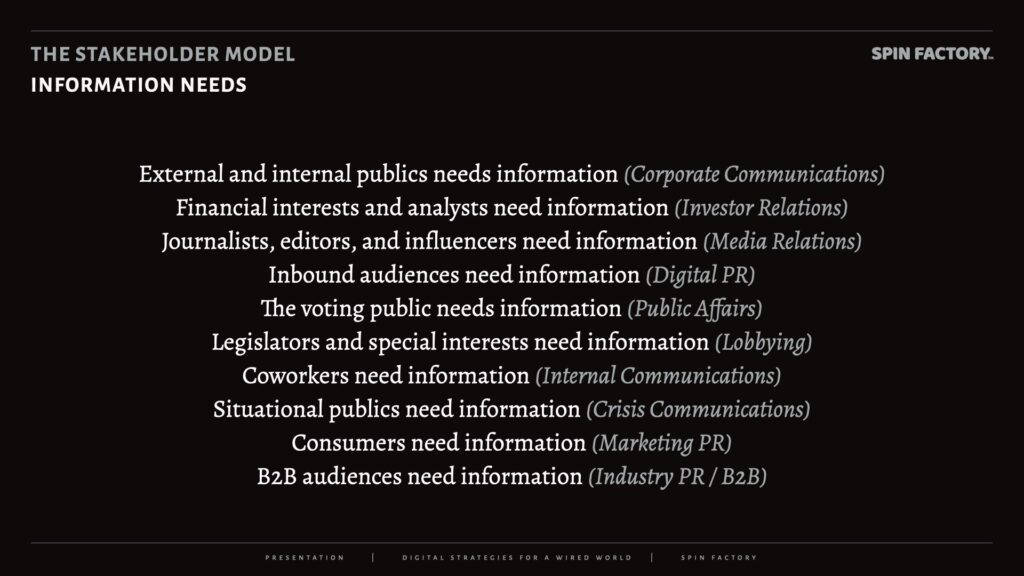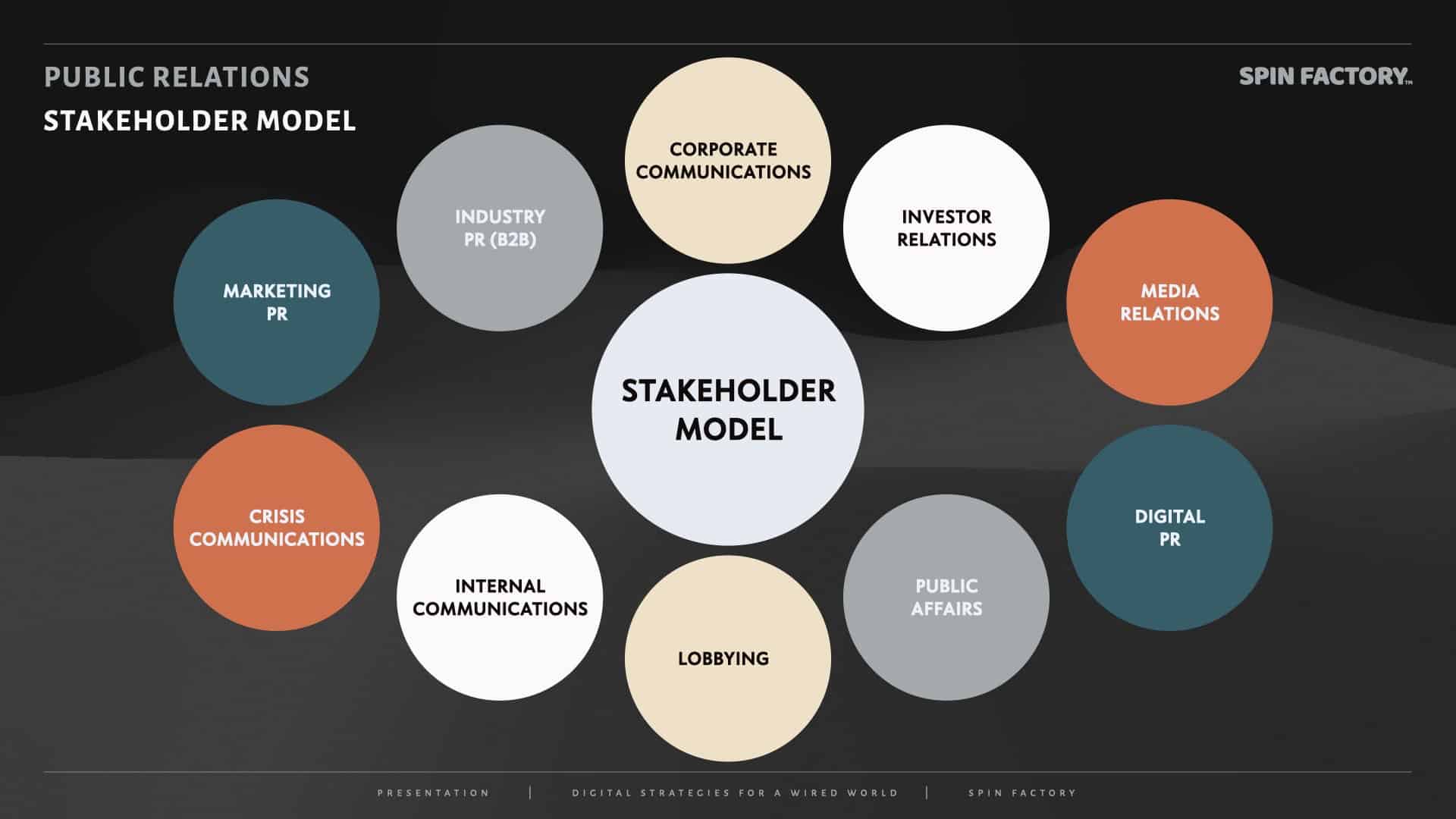Dear journalist,
Traditional journalism is going to hell in a handbasket.
The fall of journalism is a serious matter, of course. Journalism is the Fourth Estate, and we all depend on the freedom of the press and its willingness to tell meaningful stories.
PR professionals, on the other hand, are doing better. The media logic is evolving, and so are we. Change is difficult, but society needs more professional communication, not less.
So, dear journalist, let me pose this somewhat naïve question:
Is there a way for journalism to let go of the idea that PR is the problem and explore more constructive solutions?
Here we go:
More “Flacks” than “Hacks”
According to journalist Mike Rosenberg, there are five PR professionals for every news reporter in the US. Fifteen years ago, we had two “flacks” on every “hack”. Rosenberg portrays an army of “Pitchmen”, sinister corporate mercenaries, attacking journalists from every direction.
And I agree that we, the PR professionals, should improve and get better at media relations in general:
However, a reasonable assumption would be that an average PR professional spends less than 5% of their working hours working towards journalists.
The rest of the time is spent on, well, communications. Communications with various stakeholders, to be more precise.
The Stakeholders in Public Relations
In public relations (PR), we often discuss stakeholders:
Stakeholders = representatives of various vested interests directly or indirectly connected to a brand. 1Silfwer, J. (2021, January 5). The Stakeholders in Public Relations. Doctor Spin | The PR Blog. https://doctorspin.net/stakeholders-in-public-relations/
The PR function is not just about managing media relations or marketing PR; it’s about comprehensively managing relationships with diverse stakeholder groups, each with unique information needs.
Different Information Needs
Why are stakeholders so important in PR?
Marketing is typically tasked with increasing an organisation’s sales of products and services. However, many other information needs must also be met.

Establishing and sustaining relationships with various stakeholders is a significant challenge for PR professionals since their information needs are typically very different.
This requires understanding each stakeholder’s situational perspective, interests, and communication preferences.
The challenge for PR professionals is effectively identifying and addressing these varied needs. It involves crafting tailored communication strategies that resonate with each stakeholder group while maintaining a cohesive core message that aligns with the PR objectives.
“Public relations distinguishes itself from marketing by focusing on the stakeholder-organization relationship, which comprises mutual orientation around a common interest point and a multiplicity of stakes.”
Source: Public Relations Review 2Smith, B. (2012). Public relations identity and the stakeholder – organization relationship: A revised theoretical position for public relations scholarship. Public Relations Review, 38, 838 – 845. … Continue reading
The PR Stakeholder Model
PR professionals have various specialisations (based on the stakeholder model), including corporate communications, investor relations (IR), media relations, digital PR, public affairs (PA), lobbying, internal communications (IC), crisis communications, marketing PR, and industry PR (B2B).

“In a corporation, a stakeholder is a member of ‘groups without whose support the organisation would cease to exist’, as defined in the first usage of the word in a 1963 internal memorandum at the Stanford Research Institute. The theory was later developed and championed by R. Edward Freeman in the 1980s. Since then it has gained wide acceptance in business practice and in theorising relating to strategic management, corporate governance, business purpose and corporate social responsibility (CSR).”
Source: Wikipedia 3Stakeholder (corporate). (2023, October 27). In Wikipedia. https://en.wikipedia.org/wiki/Stakeholder_(corporate)
PR Specialisations (Based on Stakeholders)
PR specialisations are typically named based on which stakeholder type they manage:
Corporate communications = an organisation’s strategic use of messaging to shape its reputation, articulate its vision, and engage with key audiences across internal and external channels.
Targets: External and internal publics, business journalists, regulatory institutions, partners, suppliers, vendors, etc.
Investor relations (IR) = an organisation’s deliberate communication efforts to build trust and maintain transparency with investors, analysts, and the financial community.
Targets: Shareholders, investors, market hubs, market analysts, financial institutions, trade journalists etc.
Media relations = a brand’s targeted use of communication to foster positive interactions with journalists, editors, and media outlets and to gain favourable coverage.
Targets: Journalists, editors, influencers, etc.
Digital PR = the strategic use of online communication to build brand communities, foster engagement, and manage reputation in the digital space. 4Silfwer, J. (2017, November 20). What is Digital PR? Doctor Spin | The PR Blog. https://doctorspin.net/what-is-digital-pr/
Targets: Inbound web traffic, brand communities, subscribers, fans, followers, influencers, social networks, etc.
Public affairs (PA) = a brand’s intentional use of communication to engage with governments, policymakers, and communities to influence public policy and social impact.
Targets: Voters, political journalists, political analysts, columnists, interest groups, etc.
Lobbying = the focused use of advocacy and communication to directly influence legislative and regulatory decisions in favour of specific interests or causes.
Targets: Politicians, legislators, government officials, committees, influencers, etc.
Internal communications (IC) = an organisation’s deliberate use of messaging to align, inform, and motivate employees while fostering a productive workplace culture.
Targets: Coworkers, potential recruits, etc.
Crisis communications = a brand’s rapid, strategic deployment of communication to mitigate reputational damage, address urgent challenges, and restore public trust during critical situations.
Targets: Crisis victims, worried publics, the general public, coworkers, journalists, influencers, customers, shareholders, etc.
Marketing PR = a brand’s tactical integration of communication and promotional efforts to enhance product awareness, drive sales, and support marketing objectives.
Targets: Potential customers, existing customers, trade journalists, members, affiliates, etc.
Industry PR (B2B) = a business’s purposeful use of communication to build credibility, foster trust, and establish thought leadership within its professional sector.
Targets: B2B clients, B2B prospects, trade journalists, trade organisations, niche influencers, etc.
Learn more: Stakeholders in Public Relations
Media relations is only one focus area of several. The typical PR generalist will devote more time to corporate, internal, and inbound communications.
With a decreasing number of journalists combined with an increasing number of ways to communicate directly with the inbound public (yes, we do see other people), it makes sense for the PR industry to focus even less on traditional mass media.
Not more.
It’s a Privilege, Not a Curse
In 2000 – 2003, while studying public relations at Mid Sweden University, I interviewed the editor-in-chief at one of Sweden’s largest evening newspapers, Thomas Mattsson, Expressen.
For our thesis, my study partner Markus Christiansson and I wanted to explore the relationship between journalists and PR professionals in more depth.
When asked whether Mattson ever felt irritated about the sheer volume of useless press releases and lousy PR pitches, he said he wasn’t bothered by this.
For Mattson, people needed to pitch their stories, good or bad, to Expressen. He said he would be more worried if people, including PR professionals, didn’t pitch Expressen.
The editor-in-chief, Thomas Mattsson, welcomed PR pitches because being a gatekeeper is an essential privilege of being a journalist.
The Elephant in the Newsroom
I can understand resentment coming from journalists who are under the impression that professional communicators are responsible for making matters worse:
Corporate communicators make mistakes every day. However, it’s a stretch to claim fewer mistakes would be made if all PR professionals decided to quit their jobs tomorrow.
The real problem is that there are too few journalists, and not that more organisations prioritise better communication.
Almost all organisations today, public or private, must communicate professionally with internal and external stakeholders.
The ratio of professional PR professionals versus journalists could be twenty to one, just as long as enough journalists to report the news.
Dear journalist, perhaps news publishers should even consider hiring more PR professionals.

THANKS FOR READING.
Need PR help? Hire me here.

Bonus Resource: The Difference Between Journalism and PR
Public Relations vs Journalism

PR professionals and journalists share many practical skill sets. Still, public relations and journalism are fundamentally different:
Public relations is the effort to subjectively advocate agendas on special interests’ behalf.
A fundamental critique against public relations is that advocacy is an affluent privilege that manipulates the truth.
Journalism is the effort to objectively report the news on the public interest’s behalf.
A fundamental critique against journalism is that objectivity is unrealistic and the public interest heterogeneous.
But even if both public relations and journalism fail to live up to their ideal states at all times, both practices play vital roles in upholding a balanced and stable democracy.
Learn more: Public Relations vs Journalism
Annotations
| 1 | Silfwer, J. (2021, January 5). The Stakeholders in Public Relations. Doctor Spin | The PR Blog. https://doctorspin.net/stakeholders-in-public-relations/ |
|---|---|
| 2 | Smith, B. (2012). Public relations identity and the stakeholder – organization relationship: A revised theoretical position for public relations scholarship. Public Relations Review, 38, 838 – 845. https://doi.org/10.1016/J.PUBREV.2012.06.011 |
| 3 | Stakeholder (corporate). (2023, October 27). In Wikipedia. https://en.wikipedia.org/wiki/Stakeholder_(corporate) |
| 4 | Silfwer, J. (2017, November 20). What is Digital PR? Doctor Spin | The PR Blog. https://doctorspin.net/what-is-digital-pr/ |


